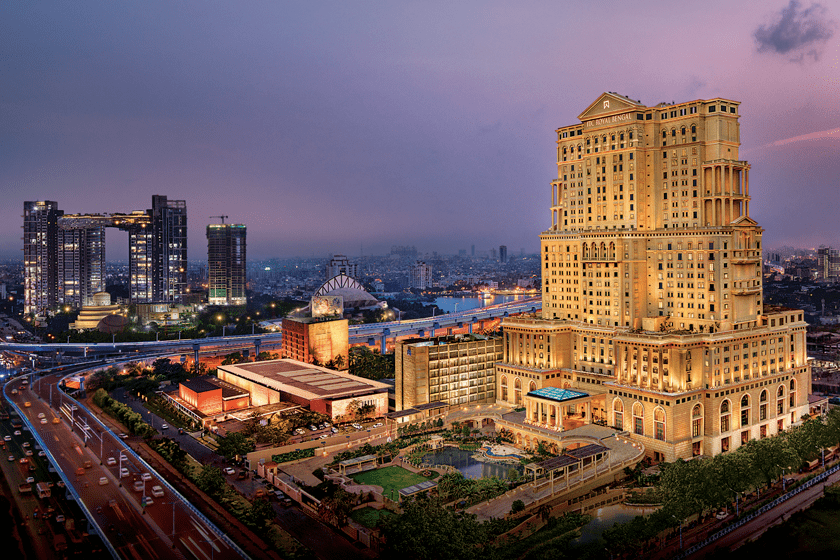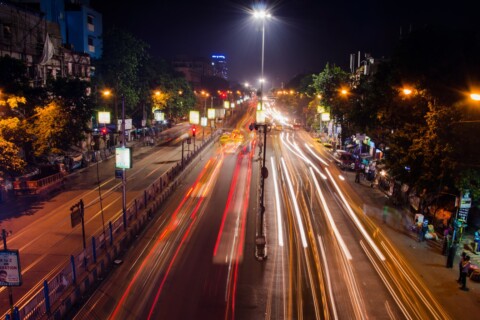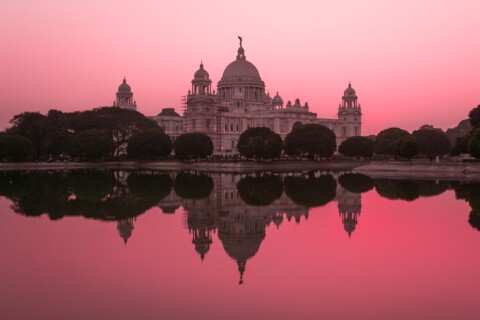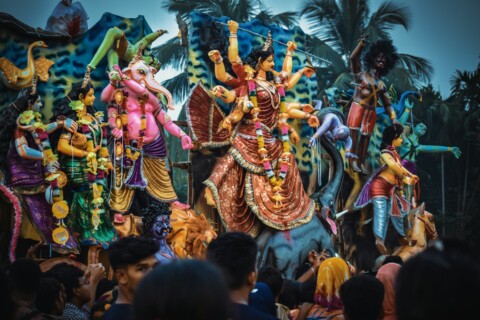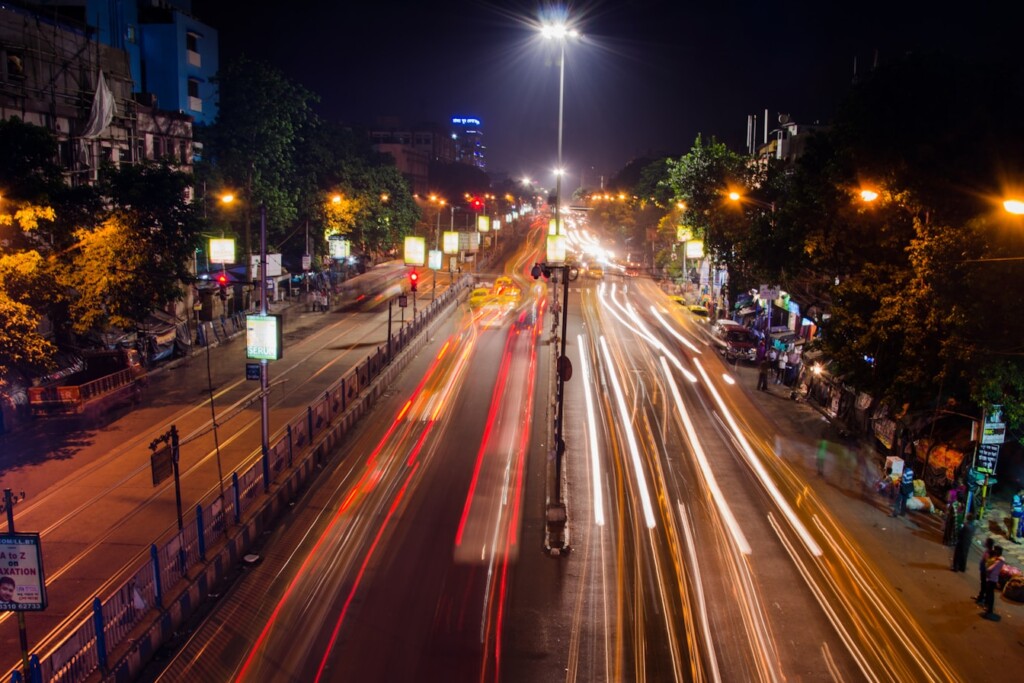Kolkata, the cultural heart of India, is a city that beautifully merges its historical past with the modern present. Its architecture stands as a testament to this rich history, showcasing a blend of Gothic, Baroque, Roman, Oriental, and Indo-Islamic styles. In this blog, we will unravel the architecture of Kolkata’s iconic buildings, exploring their historical significance, architectural details, and cultural impact. Whether you’re an architecture enthusiast, a history buff, or a curious traveler, Kolkata’s architectural heritage promises a fascinating journey.
Historical and Colonial Architecture
The Victoria Memorial
Overview: The Victoria Memorial, an enduring symbol of Kolkata, was built to commemorate Queen Victoria’s 25-year reign over India. This grand marble building is a perfect example of Indo-Saracenic revivalist style, blending elements from British and Mughal architecture.
Architectural Details: Designed by Sir William Emerson, the memorial features a massive central dome, numerous smaller domes, octagonal domed chattris, high portals, terraces, and domed corner towers. The use of Makrana marble lends the building its luminous quality.
Cultural Significance: Today, the Victoria Memorial houses a museum that offers insights into the colonial period of India, displaying various artifacts, paintings, and manuscripts from the British era.
Howrah Bridge
Historical Significance: Howrah Bridge, also known as Rabindra Setu, is an engineering marvel that stands as a symbol of Kolkata. Completed in 1943, it is one of the busiest cantilever bridges in the world, carrying daily vehicular and pedestrian traffic between Howrah and Kolkata.
Architectural Details: The bridge was constructed without any nuts and bolts, using a riveted structural system. Spanning 705 meters, it was the third-longest cantilever bridge at the time of its completion. Its robust design ensures it withstands the heavy monsoon rains and the bustling activity it supports daily.
Cultural Impact: Howrah Bridge is not only a vital transportation link but also a cultural icon featured in numerous films, books, and songs, embodying the spirit of Kolkata.
St. Paul’s Cathedral
Overview: St. Paul’s Cathedral, built in 1847, is an excellent example of Indo-Gothic architecture. Located on Cathedral Road, it was the first Anglican cathedral in Asia and remains a significant religious and historical site in Kolkata.
Architectural Details: Designed by Major William Nairn Forbes in collaboration with C.K. Robinson, the cathedral features a Gothic Revival style. The structure includes a tall spire, pointed arches, ribbed vaults, and flying buttresses. Its stained glass windows and intricate frescoes add to its majestic beauty.
Cultural Role: St. Paul’s Cathedral is not just a place of worship but also a venue for important cultural and social events. Its Christmas services, in particular, attract large crowds every year.
Art Deco and Modernist Buildings
New Market (Hogg Market)
Overview: Established in 1874, New Market, originally known as Hogg Market, is a bustling shopping destination and a fine example of the Gothic Revival style with an Art Deco twist.
Architectural Details: The market’s red brick facade, pointed arches, and tall clock tower reflect its Gothic influences. Over time, elements of Art Deco were incorporated, blending old-world charm with modern design.
Cultural Importance: New Market remains one of Kolkata’s busiest and most popular shopping centers, offering a wide variety of goods and contributing significantly to the city’s commercial life.
Indian Museum
Introduction: The Indian Museum, founded in 1814, is the oldest and largest museum in India. It exemplifies Italian architecture with its grand design and extensive collection of artifacts.
Architectural Features: Designed by Walter B. Grenville, the museum building features a sprawling facade with Corinthian columns, large porticos, and intricate carvings. The spacious halls and high ceilings are designed to house and display the museum’s vast collections.
Educational and Cultural Significance: The museum’s exhibits span across multiple disciplines, including archaeology, art, anthropology, geology, zoology, and botany, making it a vital educational resource and cultural treasure.
Writers’ Building
Historical Background: The Writers’ Building, originally constructed in 1777, served as the office for writers of the British East India Company. Over the years, it has become a significant governmental building in Kolkata.
Architectural Details: The building underwent several modifications and now features a red brick facade with Roman and Greek architectural influences. Its long corridors, arches, and statues of Greek gods and goddesses give it a distinctive and imposing presence.
Cultural Relevance: Currently housing the Secretariat of West Bengal, the Writers’ Building is a symbol of Kolkata’s administrative legacy and colonial history.
Indo-Islamic and Indian Vernacular Architecture
Marble Palace
Introduction: Built in 1835 by Raja Rajendra Mullick, a wealthy Bengali merchant, the Marble Palace is a stunning example of neoclassical architecture infused with traditional Bengali elements.
Architectural Features: The palace is renowned for its marble walls, floors, and sculptures. The structure also features a blend of European and Indian design elements, with Corinthian pillars, intricate balconies, and sprawling courtyards.
Cultural Significance: The Marble Palace houses an eclectic collection of art, antiques, and memorabilia, making it a significant cultural and historical site in Kolkata.
Jorasanko Thakur Bari
Historical Background: Jorasanko Thakur Bari, the ancestral home of the Tagore family, was built in the 18th century and is a prime example of traditional Bengali architecture.
Architectural Details: The mansion features open courtyards, expansive verandahs, and large rooms that reflect the lifestyle of the Bengali aristocracy. The use of local materials and traditional building techniques make it a significant architectural site.
Cultural Impact: As the birthplace of Rabindranath Tagore, the house is now a museum dedicated to his life and works, offering insights into the cultural and literary heritage of Bengal.
Dakshineswar Kali Temple
Introduction: The Dakshineswar Kali Temple, founded by Rani Rashmoni in 1855, is an iconic example of traditional Bengali temple architecture.
Architectural Features: The temple complex is built in the navaratna style, featuring nine spires distributed over three tiers. It includes a large central shrine dedicated to Kali, surrounded by 12 smaller Shiva temples.
Religious and Cultural Importance: The temple is not only a significant religious site but also a cultural hub, attracting millions of devotees and tourists every year.
Modern Architectural Marvels
The Salt Lake Stadium
Introduction: Known locally as Yuva Bharati Krirangan, the Salt Lake Stadium is one of the largest stadiums in India and a modern architectural marvel in Kolkata.
Architectural Details: The stadium, which opened in 1984, features a unique elliptical shape and a three-tiered structure. It has a seating capacity of over 85,000, making it one of the largest stadiums in Asia.
Cultural Significance: The Salt Lake Stadium hosts major sporting events, concerts, and cultural programs, playing a crucial role in Kolkata’s contemporary cultural and sports landscape.
The Birla Planetarium
Introduction: The Birla Planetarium, inaugurated in 1963, is one of the largest planetariums in Asia and an iconic structure in Kolkata.
Architectural Features: Modeled after the Sanchi Stupa, the planetarium’s distinctive dome is its most striking feature. The interior includes an auditorium and various astronomical exhibits.
Educational and Cultural Role: The planetarium serves as an educational center, offering regular shows on astronomy and space science, attracting students, tourists, and space enthusiasts.
The ITC Royal Bengal
Introduction: The ITC Royal Bengal, a luxury hotel opened in 2019, represents the fusion of modern architecture with traditional Bengali aesthetics.
Architectural Details: The hotel’s design is inspired by Bengal’s rich cultural heritage, featuring intricate jali work, grand arches, and traditional motifs. The lavish interiors and state-of-the-art facilities exemplify modern luxury.
Economic and Cultural Impact: The hotel has become a landmark in Kolkata’s hospitality industry, hosting numerous events and contributing to the city’s tourism sector.
Conclusion
Kolkata’s architectural heritage is a rich and diverse tapestry that tells the story of its past and present. From the grandeur of colonial-era buildings to the intricate designs of traditional Bengali structures and the sleek lines of modern architecture, the city offers a visual feast for anyone interested in architecture and history. Each building, with its unique style and story, contributes to the cultural mosaic that makes Kolkata truly special.
Call to Action: Discover Kolkata’s architectural wonders firsthand and immerse yourself in its rich cultural heritage. Share your experiences and favorite buildings with us in the comments below!
FAQs
What are the most iconic colonial buildings in Kolkata?
The Victoria Memorial, Howrah Bridge, St. Paul’s Cathedral, Indian Museum, and Writers’ Building are some of the most iconic colonial buildings in Kolkata, showcasing a blend of British, Gothic, and Roman architectural styles.
Which modern buildings in Kolkata are worth visiting?
The Salt Lake Stadium, Birla Planetarium, and ITC Royal Bengal are notable modern buildings that represent Kolkata’s contemporary architectural achievements.
What is unique about Bengali traditional architecture?
Bengali traditional architecture, as seen in structures like Jorasanko Thakur Bari and Dakshineswar Kali Temple, often features open courtyards, intricate woodwork, and local materials, reflecting the region’s cultural and climatic conditions.
How does Kolkata’s architecture reflect its cultural diversity?
Kolkata’s architecture reflects its cultural diversity through a mix of colonial, Gothic, Indo-Islamic, and modern styles, representing the various historical influences and the city’s evolution over time.
Why is the Victoria Memorial significant?
The Victoria Memorial is significant as a symbol of Kolkata’s colonial past and its architectural grandeur. It serves as a museum that houses artifacts from the British era, offering insights into India’s history.




